The French Revolution and Birth of Liberty, Equality and Fraternity
The French Revolution is often considered to be one of the most significant events not only in the history of France and Europe, but also in the world. This revolution is known also as the Revolution of 1789, the year when it reached its first climax.
On the whole, however, the French Revolution began in 1787 and lasted until the end of the century. The causes of the French Revolution are many and had ramifications that were felt far beyond the borders of France.
The Build-up to the French Revolution
France was ruled by a monarchy as early as the 5th century AD, when the Kingdom of the Franks was established by the Merovingian dynasty. The House of Bourbon came to power in France during the 16th century, when Henry IV was crowned King of France in 1589.
This dynasty continued ruling France in the centuries that followed. On the eve of the French Revolution, the Bourbon ruler of France was Louis XVI, who inherited the throne in 1774, following the death of his grandfather and predecessor, Louis XV.
By the time Louis XVI came to power, the feudal structure of medieval Europe had already been severely weakened. Although France was an absolute monarchy, the power of the king was threatened by other segments of French society. For instance, by the 18th century, the French bourgeoisie were aspiring to political power.
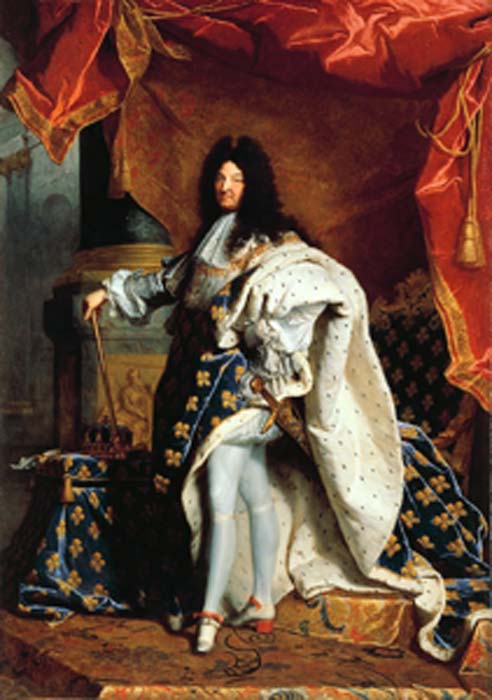
Louis XIV of France ruled at the time of the French Revolution. (Abdicata / Public Domain)
This was a class of wealthy elites, who were excluded from politics due to their status as commoners. In addition, the peasants, who enjoyed an improved standard of living and education, were eager to get rid of the last vestiges of feudalism, so as to obtain the full rights as landowners, and to have the freedom to increase their holdings.
The king’s problems were exacerbated by the fact that the French economy was not in good shape. For instance, France had participated in various wars during the 18th century in an attempt to assert its influence on the world stage. This incurred huge war debt, was made worse by the military’s many failures.
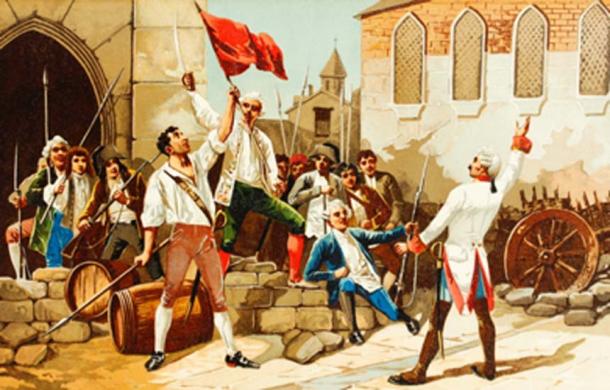
Riot in Paris – prelude to the French Revolution. (Emilio Ereza / Adobe Stock)
In order to manage this national debt, a harsher system of taxation was imposed on the French people. To make matters worse, the country was suffering from food shortages, as a result of years of poor harvest, coupled with an increase in the country’s population (due to longer life expectancy thanks to higher standards of living from about 1730).
Louis XVI himself was an inefficient ruler. He had neither sufficient force of character nor resolution to rule as an absolute monarch. Thus, he was unable to effectively manage the various factions at court, despite the fact that he had some ministers who had plans to reform the country’s finances.
Reformers of France
The two most foremost reformers in Louis XVI’s court were Jacques Necker and Anne Robert Jacques Turgot, Baron de Laune. Instead of providing the necessary support to these men, to potentially save France’s economy, the king dismissed Necker and Turgot. Louis XVI’s dismissal of these two ministers caused widespread anger in France. This was due to the popularity of the two men among the people, as Necker and Turgot represented and fought for them.
On the 22nd of February 1787, the first Assembly of Notables, in over a hundred years, was convened by Loménie de Brienne, the king’s finance minister. This assembly consisted of a selected group of nobles, clergy, bourgeoisie, and bureaucrats, and was specifically called to approve measures proposed to solve the country’s financial crisis. Charles Alexandre de Calonne, the Controller-General of Finances, had proposed in the previous year a universal land tax that did not exempt the noble and the clergy. Instead of approving this new land tax, however, the Assembly of Notables rejected it.
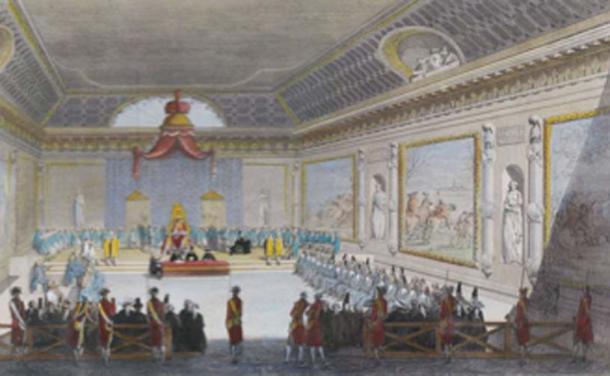
The Assembly of Notables of 1787 in Versailles. (Remi Mathis / Public Domain)
Furthermore, the assembly demanded Louis XVI call the Estates-General, which the king did. Like the Assembly of Notables the last Estates-General had not been called for over a century.
The Estates-General, which was held in 1789, was a general assembly representing the three estates of the realm – the clergy (First Estate), the nobility (Second Estate), and commoners (Third Estate). Unlike the Parliament in England, the Estates-General did not have any legislative powers, and instead functioned as an advisory body to the French king.
- The Atheist Martyr: Rebellious ‘Knight’ Inspired the French Revolution
- DNA test on bloody gourd reveals it is not from decapitated King Louis XVI
- Why are Democrats ‘Left’ and Republicans ‘Right’? The Surprising History of Political Affiliations
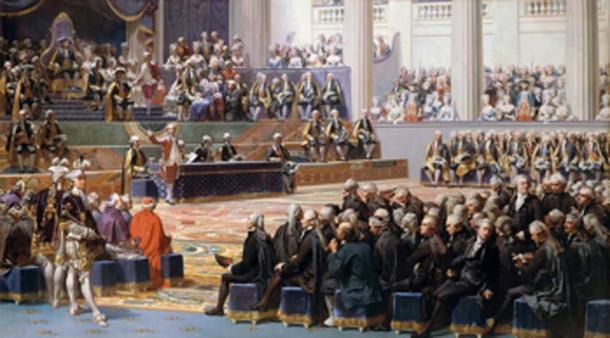
The Estates-General in Versailles on 5 May 1789. (Kirtap / Public Domain)
The First and Second Estates had a bigger say in the Estates-General, prompting the Third Estate to demand equal representation and the abolishment of the noble veto. On the 17th of June 1789, representatives of the Third Estate (along with more liberal-minded members of the other two Estates) met alone, and formed a revolutionary assembly known as the National Assembly.
Three days later, they met in the king’s indoor tennis court (as they were locked out of their regular meeting hall), and took the so-called ‘Tennis Court Oath’, swearing not to disperse until a new constitution for France was drafted. Initially, Louis XVI did not recognize the National Assembly, but soon gave in, and urged to remaining clergy and nobles to join it. On the 9th of July, the National Assembly was reconstituted as the National Constituent Assembly.
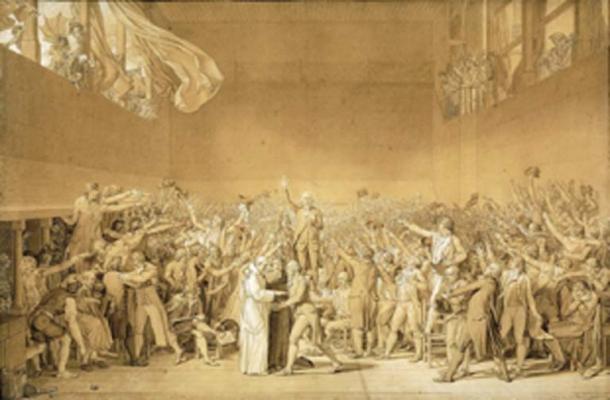
Drawing by Jacques-Louis David of the Tennis Court Oath. David later became a deputy in the National Convention in 1793. (Yeenosaurus / Public Domain)
Louis XVI Gathers Troops
At the same time, the king was gathering troops around Paris. This, along with the dismissal of Necker on the 11th of July, was perceived by the Parisians as a conspiracy by the king and his nobles to overthrow the Third Estate, sending them into a panic, and provoking an insurrection in the capital.
On the 14th of July, the Parisian crowd stormed the Bastille in an attempt to secure firearms and gunpowder. Moreover, the Bastille was seen as a representation of royal tyranny, so its fall had symbolic meaning as well. The storming of the Bastille is often regarded to be the starting point of the French Revolution.
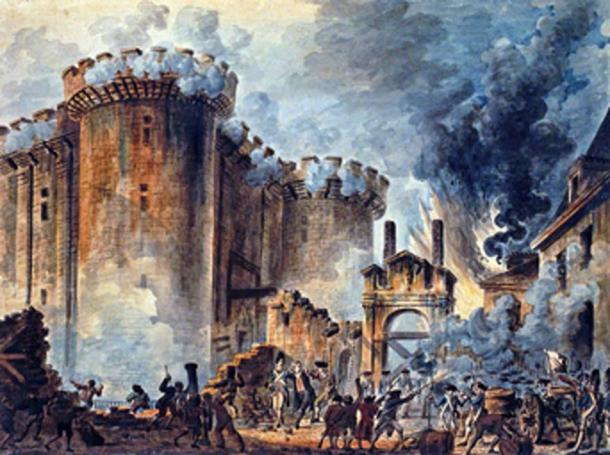
Storming of The Bastille on 14 July 1789, which later meant the end of the Ancien Régime, was the start of the French Revolution. (Jaredzimmerman / Public Domain)
Once again, Louis XVI relented and returned to Paris on the 27th of July, where he accepted the tricolore cockade, a symbol of the revolution. On the 4th of August, the assembly decreed the abolishment of feudalism and the tithe. In other words, the privileges long enjoyed by the nobility and the clergy were stripped away. On the 26th of August, one of the fundamental documents of the French Revolution, the Declaration of the Rights of Man and of the Citizen was published by the Assembly.
Although the document was a statement of principles, rather than a written constitution, it was the first step in that direction. The decrees and the Declaration were so radical that Louis XIV refused to accept them, though he was powerless to do anything about it. On the 6th of October, the royal family was brought back to Paris, as a result of the Women’s March on Versailles, which was a protest against the harsh economic conditions, especially the shortage of bread, that they were facing.
In the two years that followed, the assembly made numerous reforms to the French state. The Roman Catholic Church in France, which had enjoyed great influence and privilege under the Ancien Régime, was especially targeted.
In November 1789, for instance, the property of the church was nationalized, while the following year saw the introduction of a civil constitution of the clergy, and the imposition of a civic oath on them, and the suppression of religious orders and monastic vows. Other reforms that were made during this time included the reorganization of local government, the removal of civil disabilities of Jews, the abolishment of nobility and titles, and the abolishment of guilds and monopolies.
The Royal Family Attempts to Flee
On the 20th of June 1791, Louis XVI and the royal family attempted to flee to the eastern frontier, where they were to receive refuge at the camp of General Bouillé at Montmédy. The flight was a failure, as the king and his family were captured in Varennes and brought back to Paris. As a consequence of his actions, the king lost all credibility as a constitutional monarch.
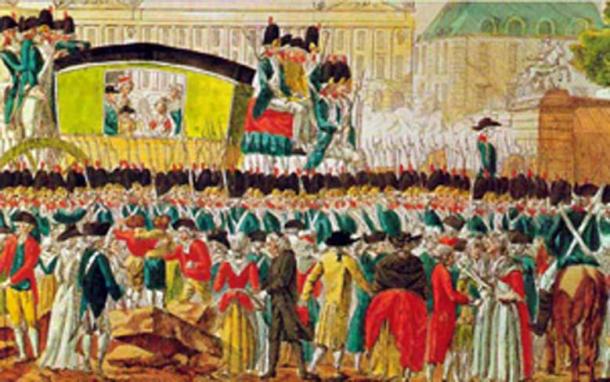
Return of the royal family to Paris on 25 June 1791, after the flight to Varennes. (Gryffindor / Public Domain)
Subsequently, the king was eager for a war with other European powers. If France were victorious, his popularity would increase, while a French defeat could allow him to reclaim his throne. Moreover, prompted by the queen, Marie Antoinette, he committed himself to subterfuge and deception.
In April 1792, the War of the First Coalition broke out, with France declaring war on Austria. The Austrian commander, the Duke of Brunswick, published a manifesto, which, among other things, declared his intention to restore Louis XVI to the French throne, and the destruction of Paris if the safety of the royal family were endangered.
This infuriated the French people and on the 10th of August 1792 the people of Paris, along with the provincial militia, captured Tuileries, where the royal family was staying. Following the imprisonment of the royal family, the National Convention, the first French government organized as a republic, was established.
The trial of Louis XVI began on the 11th of December and he was condemned to death on the 18th of January 1793. Three days later the king was executed. The queen was also executed that year, on the 16th of October.
- Simon Bolivar, The Liberator and Revolutionary Hero Who Freed South America
- The Magna Carta: Did a Tyrannical English King Really Set the Stage for Liberty?
- New Study Reveals that London was the Most Violent Place in Medieval England
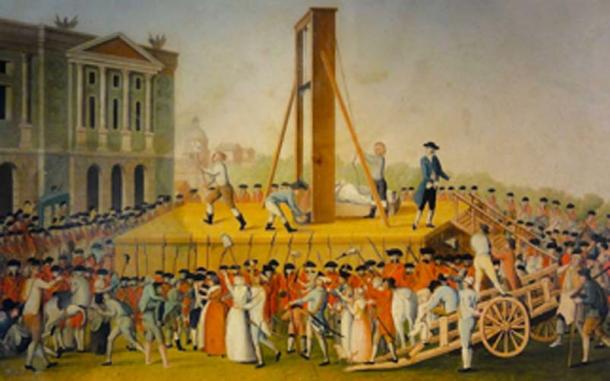
Marie Antoinette's execution on 16 October 1793: Sanson, the executioner, showing Marie Antoinette's head to the people. (Vargalanna / Public Domain)
On the 6th of April 1793, the Committee of Public Safety was established. This committee was tasked with the protection of the republic from external and internal enemies and was granted dictatorial powers. Its most notorious member was Maximilien Robespierre, who was appointed to the committee on the 27th of July 1793.
The Reign of Terror
The period between 1793 and 1794 is known as the Reign of Terror, during which revolutionary fervor, anti-clerical sentiment, and accusations resulted in massacres and executions throughout France. Officially, over 17,000 people were tried and executed, though the number of those who died in prison or without trial is unknown. Robespierre himself was eventually executed on the 28th of July 1794.
In 1795, the Directory was established, which replaced the Committee of Public Safety. This was a committee of five men and held the executive power of the state. During its early days, the Directory sought to end the excesses of the Reign of Terror. The Directory remained in power until 1799.
While the Directory ended the mass-executions carried out by its predecessor, it was far from perfect. During its four years in power, the Directory had to deal with financial crises, discontent among the people, inefficiency, and political corruption.
In order to maintain their grasp on authority, the Directory became increasingly reliant on the military. As a consequence, much power was invested in the generals, one of them being the young and brilliant Napoleon Bonaparte.
Napoleon Bonaparte Takes Control
Under the Directory, Napoleon was appointed commander of the Army of the Interior, which meant that he was aware of every political development in France. Additionally, he was a respected adviser on military matters to the Directory.
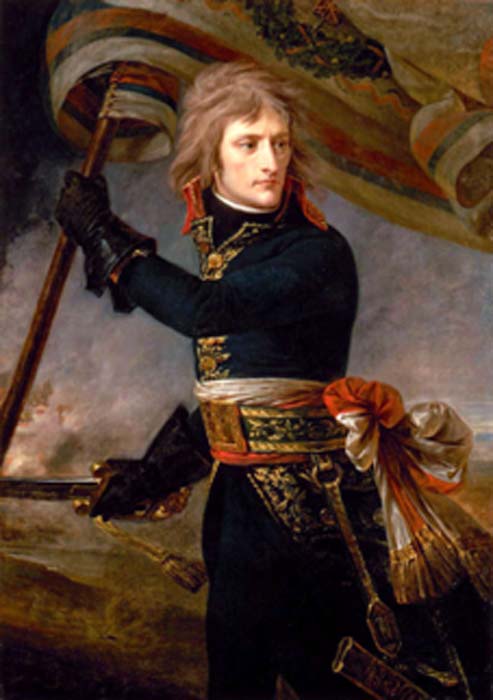
Napoleon Bonaparte was instrumental in ending the French Revolution. (Hohum / Public Domain)
In February 1796, Napoleon was given command of the French army in Italy and conducted a successful campaign there. In the following year, Tyrol was invaded, and the Austrians sued for peace, thus bringing an end to the War of the First Coalition.
Back in France, the Directory faced opposition from the remaining supporters of the monarchy and Robespierre. Riots and counter-revolutionary activities broke out around the country and the army was called in to suppress them.
This allowed Napoleon to further consolidate his power, and on the 9th of November 1799, he staged a coup d'état, which replaced the five directors with three consuls, one of whom, needless to say, was Napoleon. The dissolution of the Directory and the establishment of the French Consulate marked the end of the French Revolution.
The French Revolution had many long-lasting consequences, not only for France, but also for Europe and the rest of the world. Some of these are regarded to be beneficial, including the setting of a precedent for a representational, democratic system of governance, the separation of church and state, as well as the establishment of basic human rights, such as equality among all citizens before the law, and the freedom of religion.
Nevertheless, the French Revolution also had a number of negative effects, the most infamous being the mass executions during the Reign of Terror. The chaos in France spilled over into Europe, as evident in the French Revolutionary Wars and the Napoleonic Wars.
Top image: Liberty Leading the People by Eugène Delacroix (1830), celebrates the French Revolution (Louvre Museum). Source: Public Domain
By Wu Mingren
References
Godechot, J. 2019. Napoleon I. [Online] Available at: https://www.britannica.com/biography/Napoleon-I
Goodwin, A. and Popkin, J. 2019. Louis XVI. [Online] Available at: https://www.britannica.com/biography/Louis-XVI
History.com Editors. 2019. French Revolution. [Online] Available at: https://www.history.com/topics/france/french-revolution
New World Encyclopedia. 2017. Declaration of the Rights of Man and of the Citizen. [Online] Available at: https://www.newworldencyclopedia.org/entry/Declaration_of_the_Rights_of_...
New World Encyclopedia. 2019. French Revolution. [Online] Available at: https://www.newworldencyclopedia.org/entry/French_Revolution
Office of the Historian, United States Department of State. Date Unknown. The United States and the French Revolution, 1789–1799. [Online] Available at: https://history.state.gov/milestones/1784-1800/french-rev
Schwartz. Date Unknown. History 151 The French Revolution: Causes, Outcomes, Conflicting Interpretations. [Online] Available at: https://www.mtholyoke.edu/courses/rschwart/hist151s03/french_rev_causes_...
The Editors of Encyclopaedia Britannica. 2019. French Revolution. [Online] Available at: https://www.britannica.com/event/French-Revolution
Wilde, R. 2019. A Beginner's Guide to the French Revolution. [Online] Available at: https://www.thoughtco.com/beginners-guide-to-the-french-revolution-1221900
Wilde, R. 2019. French Revolution Timeline: 6 Phases of Revolution. [Online]
Available at: https://www.thoughtco.com/french-revolution-timeline-1221901
Wilde, R. 2019. The French Revolution, Its Outcome, and Legacy. [Online]
Available at: https://www.thoughtco.com/consequences-of-the-french-revolution-1221872
www.historyhome.co.uk. 2016. A chronology of the French Revolution. [Online] Available at: http://www.historyhome.co.uk/c-eight/france/frevchro.htm
















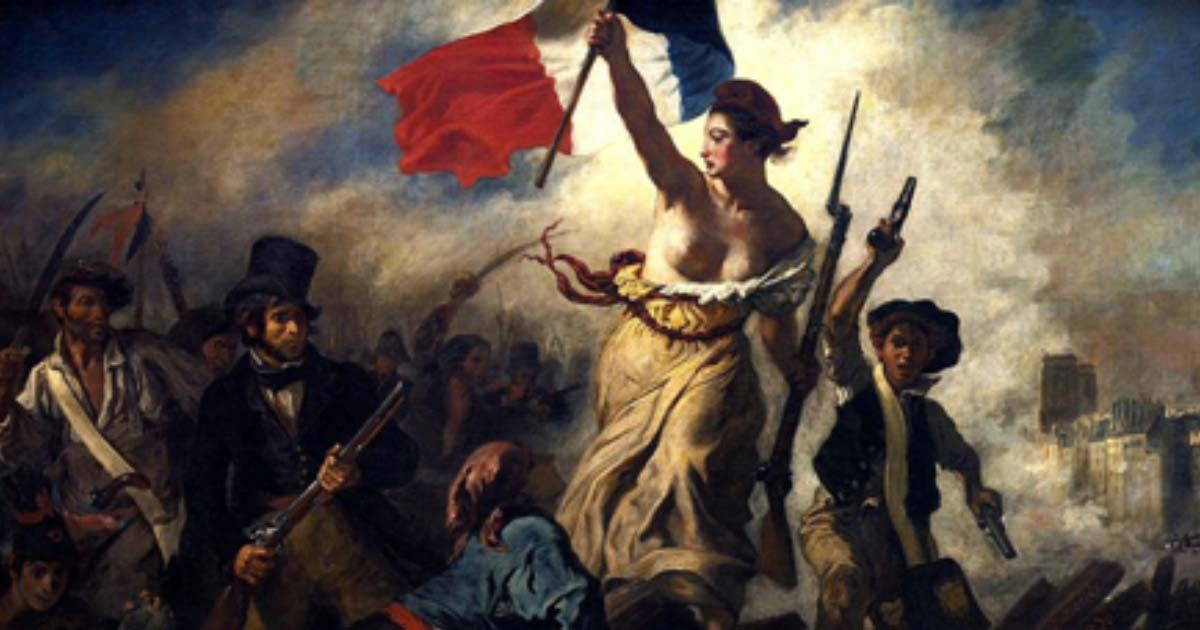

Comments
Having Studied Modern History at School, where the course starts with the French Revolution, I have been wondering recently why so few join the dots that the Americans revolted FIRST, and set up a democracy FIRST (1776). This was undoubtably a huge influence on the French, who were allied with the US, yet free of the murderous bloodbath that France became.